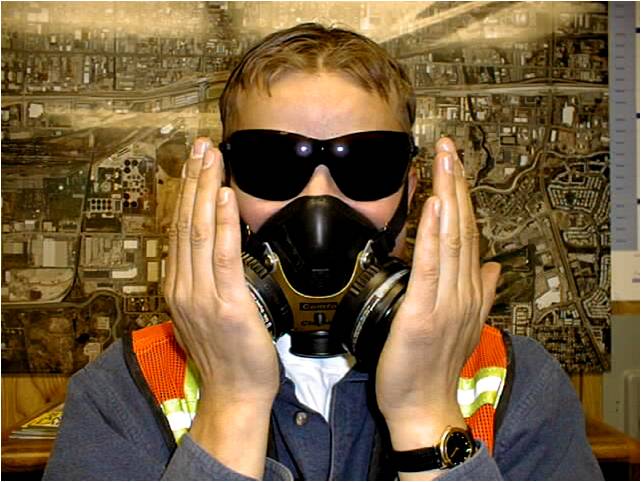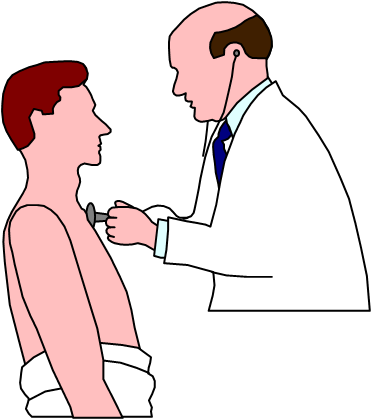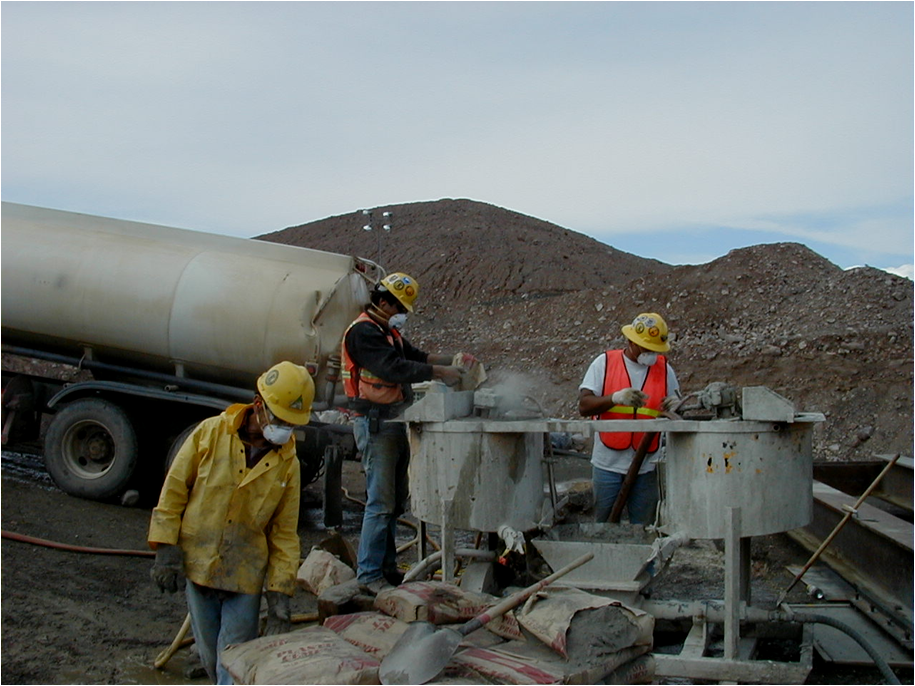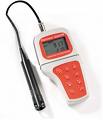Construction Safety Standards - Respiratory Protection Quiz

This quiz is designed to test employees on their knowledge of safety, and respiratory protection.
- 1.
True or FalseA respirator is needed when working with abrasive blasting?
- A.
True
- B.
False
Correct Answer
A. TrueExplanation
A respirator is needed when working with abrasive blasting because abrasive blasting involves the use of high-pressure air or water to propel abrasive materials, such as sand or glass beads, against a surface. This process generates a significant amount of dust and particles, which can be harmful if inhaled. A respirator helps to filter out these particles and protect the person working from respiratory issues or lung damage. Therefore, it is necessary to wear a respirator when working with abrasive blasting to ensure safety and prevent any health hazards.Rate this question:
-
- 2.
Respirators will be provided by the ____________ when they are necessary to protect employee health.
- A.
Employer
- B.
Owner
- C.
Employee
Correct Answer
A. EmployerExplanation
The employer is responsible for providing respirators when they are necessary to protect employee health. This is because the employer has a duty to provide a safe and healthy work environment for their employees. Respirators may be necessary in certain situations where there is a risk of exposure to harmful substances or airborne contaminants. By providing respirators, the employer ensures that employees are protected and their health is not compromised.Rate this question:
-
- 3.
Retraining is required……
- A.
Every week
- B.
When an employee is observed not following initial training
- C.
When new or additional hazards arrive.
- D.
A and C
- E.
B and C
Correct Answer
E. B and CExplanation
Retraining is required when an employee is observed not following initial training and when new or additional hazards arrive. This means that if an employee is not following the training they received initially, they need to be retrained. Additionally, if new or additional hazards arise in the workplace, employees need to be trained on how to handle these hazards. Therefore, the correct answer is B and C.Rate this question:
-
- 4.
T or FEmployers must provide a medical evaluation or questionnaire to determine the employee’s ability to use respirators before requiring the use thereof.
- A.
True
- B.
False
Correct Answer
A. TrueExplanation
Employers are required to provide a medical evaluation or questionnaire to assess the employee's fitness for using respirators. This is important to ensure that the employee does not have any medical conditions that may be aggravated by the use of respirators and that they are physically capable of using them effectively. By conducting this evaluation, employers can ensure the safety and well-being of their employees and prevent any potential health risks that may arise from the use of respirators.Rate this question:
-
- 5.
Which of the following respiratory hazards is (are) present when saw cutting concrete with a gas saw? Mark all that apply
- A.
Gases
- B.
Vapors
- C.
Dust
- D.
Fumes
- E.
Oxygen Deficiency
Correct Answer(s)
A. Gases
B. Vapors
C. Dust
D. Fumes
E. Oxygen DeficiencyExplanation
All hazards could be present depending on the work location. Example: in a confined space oxygen levels could be depleted due to the use of a gas engine.Rate this question:
-
- 6.
Gases can be _______________________than ambient air.
- A.
Lighter
- B.
Lighter or heavier
- C.
Heavier
- D.
Neither, Gas weights the same as air.
Correct Answer
B. Lighter or heavierExplanation
Gases can be lighter or heavier than ambient air because their density can vary. The density of a gas determines whether it will rise or sink in air. If a gas is lighter than air, it will rise and disperse upwards. On the other hand, if a gas is heavier than air, it will sink and accumulate closer to the ground. Therefore, depending on their composition and temperature, gases can either be lighter or heavier than the surrounding air.Rate this question:
-
- 7.
How much oxygen is present in clean air?
- A.
1%
- B.
7%
- C.
About 21%
- D.
100%
Correct Answer
C. About 21%Explanation
Clean air typically contains about 21% oxygen. This is the optimal level of oxygen for humans to breathe and for combustion to occur. Oxygen is essential for the survival of most living organisms, and this concentration in the atmosphere allows for efficient respiration and energy production.Rate this question:
-
- 8.
__________ represents a condition that would immediately be dangerous to someones health or life.
- A.
CADL
- B.
MSDS
- C.
IDLH
- D.
PEL
Correct Answer
C. IDLHExplanation
IDLH stands for Immediately Dangerous to Life or Health. It is a term used to describe conditions or substances that pose an immediate threat to someone's health or life. This could include situations where exposure to certain chemicals or environments could result in severe injury, illness, or even death. Therefore, IDLH represents a condition that would immediately be dangerous to someone's health or life.Rate this question:
-
- 9.
What are the 3 classes of respirators?
- A.
Class A, Class B, Class C
- B.
Class 1, Class 2, Class 3
- C.
Air Purifying, Supplied Air, Self Contained
Correct Answer
C. Air Purifying, Supplied Air, Self ContainedExplanation
The three classes of respirators are categorized as Air Purifying, Supplied Air, and Self Contained. Air Purifying respirators use filters or cartridges to remove contaminants from the air. Supplied Air respirators deliver clean air from an external source, such as a compressor or air tank. Self Contained respirators have their own air supply, typically in the form of a tank or canister. These different classes of respirators provide varying levels of protection depending on the specific respiratory hazards present in the environment.Rate this question:
-
- 10.
What class of respirator would be required for a room with a high concentration of air-borne substances that don’t present in Immediate Danger to Life and Health (IDLH)?
- A.
Supplied-Air
- B.
None Needed
- C.
Self-Contained
- D.
Air-Purifying
Correct Answer
A. Supplied-AirExplanation
A room with a high concentration of airborne substances that do not present an immediate danger to life and health would require a supplied-air respirator. This type of respirator provides clean air from an external source, such as a compressor or a clean air tank, to the wearer. It ensures that the wearer is not exposed to the contaminated air in the room and provides a higher level of protection compared to air-purifying respirators. Self-contained respirators, on the other hand, are typically used in environments with IDLH substances, where the air supply is not available.Rate this question:
-
- 11.
Are employees with facial hair allowed to wear respirators? Yes or No
- A.
Yes
- B.
No
Correct Answer
B. NoExplanation
Employees with facial hair are not allowed to wear respirators because facial hair can interfere with the proper fit of the respirator, compromising its effectiveness in protecting the wearer from airborne contaminants. A proper seal between the respirator and the face is essential for it to work effectively, and facial hair can prevent this seal from being achieved. Therefore, employees with facial hair should not wear respirators.Rate this question:
-
- 12.
At the beginning of each work day can employees assume that their supervisors have checked their masks?
- A.
Yes
- B.
No, each individual is responsible for maintenance of their respiratory equipment
Correct Answer
B. No, each individual is responsible for maintenance of their respiratory equipmentExplanation
(Always check your own mask. Don’t put your life in others hands.)Rate this question:
-
- 13.
How often do respirators need to be cleaned or replaced?
- A.
Once a week
- B.
When usage dictates
- C.
Each day
- D.
Every job
Correct Answer
B. When usage dictatesExplanation
Respirators need to be cleaned or replaced when usage dictates, which means that the frequency of cleaning or replacement depends on the level of usage. This implies that respirators should be cleaned or replaced whenever they become dirty, damaged, or contaminated, rather than adhering to a fixed schedule such as once a week, each day, or every job. The answer suggests that the cleaning or replacement should be done as necessary, based on the specific conditions and extent of usage.Rate this question:
-
Quiz Review Timeline +
Our quizzes are rigorously reviewed, monitored and continuously updated by our expert board to maintain accuracy, relevance, and timeliness.
-
Current Version
-
Mar 22, 2023Quiz Edited by
ProProfs Editorial Team -
Dec 23, 2008Quiz Created by
Kiewitsafe
- Accounting Quizzes
- Advertising Quizzes
- Agriculture Quizzes
- Automotive Quizzes
- Brand Quizzes
- Business Accounting Quizzes
- Business Analyst Quizzes
- Business Development Quizzes
- Business Environment Quizzes
- Business Etiquette Quizzes
- Business Finance Quizzes
- Business Math Quizzes
- Business Organization Quizzes
- Business Plan Quizzes
- Business Process Quizzes
- Business Study Quizzes
- Business Technology Quizzes
- CEO Quizzes
- Collaboration Quizzes
- Company Quizzes
- Consumer Quizzes
- CSR Quizzes
- Customer Quizzes
- Customer Service Quizzes
- Development Quizzes
- Ecommerce Quizzes
- Employment Quizzes
- Entrepreneurship Quizzes
- Finance Quizzes
- Hospitality Quizzes
- Human Resources Quizzes
- Industry Quizzes
- International Business Quizzes
- Introduction To Business Quizzes
- Investment Quizzes
- Logistics Quizzes
- Management Quizzes
- Manufacturing Quizzes
- Marketing Quizzes
- Material Quizzes
- Media Quizzes
- Office Quizzes
- Organization Quizzes
- Principles Of Business Quizzes
- Printing Quizzes
- Product Quizzes
- Publishing Quizzes
- Real Estate Quizzes
- Retail Quizzes
- Sales Quizzes
- SAP Business One Quizzes
- Small Business Quizzes
- Source Quizzes
- Supply Quizzes
- Survey Quizzes
- Telecommunication Quizzes
- Trade Quizzes
- Training Quizzes
- Transportation Quizzes
- Warehouse Quizzes
- Welding Quizzes
 Back to top
Back to top






